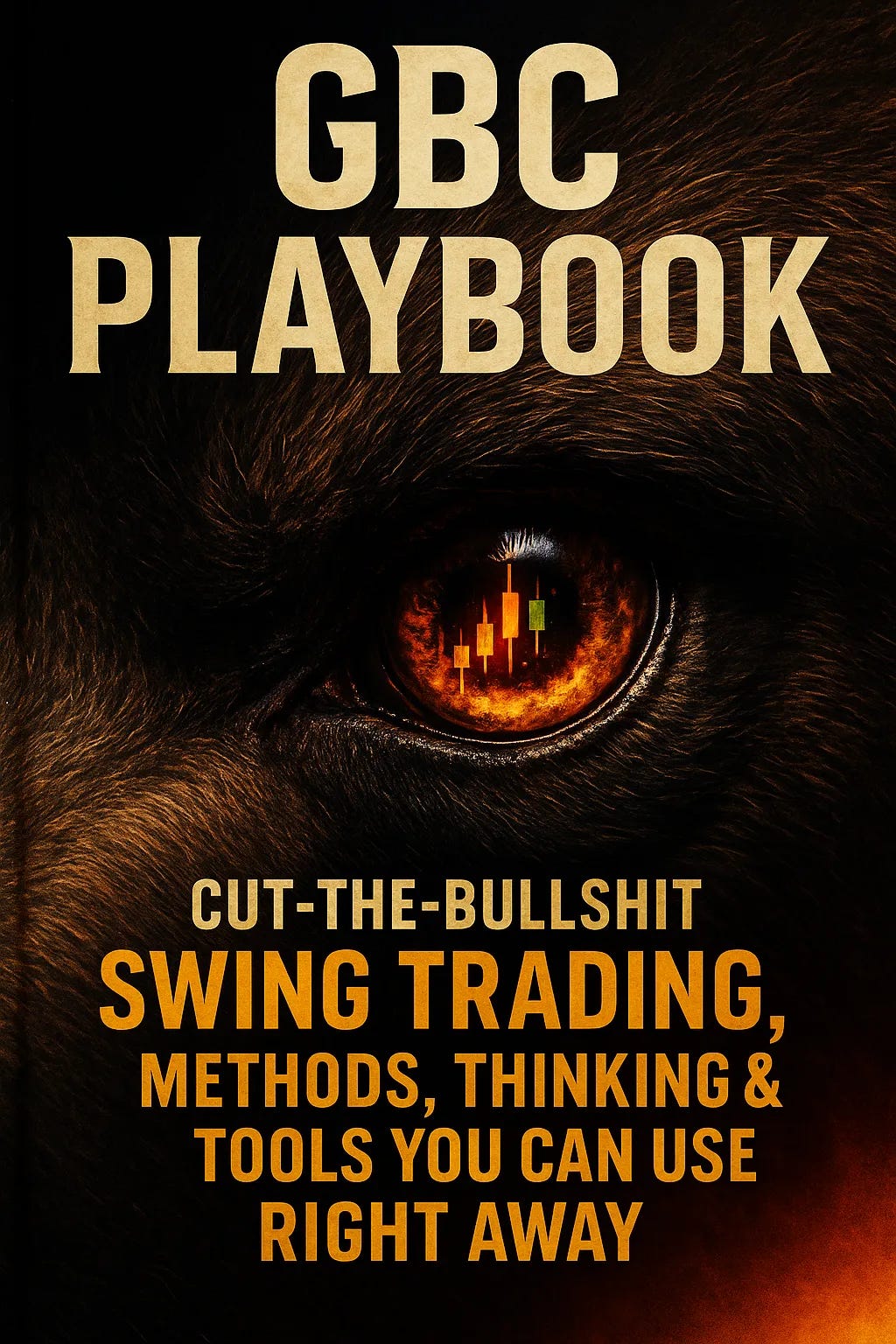GBC Playbook: Volume II
Market Monitor, Breadth, Sector Rotation and Risk-On / Risk-Off Analysis
The Wind at Your Back: Mastering the Market Monitor
This playbook is here to help. If you’re new or still finding your feet, you’ll get real, practical value from it. If you’re experienced, you’ll recognize a lot, but you may still catch a fresh angle, a small tweak, or a subtle shift that makes a difference.
The heart of it is simple: take what speaks to you and make it your own. Trading is personal. We all see the market differently. We move on different timeframes. We carry different risks, routines, strengths, and flaws.
There is no single right way. There is only your way.
Use what follows to sharpen your process, not to replace it.
Keep what resonates.
Let go of what doesn’t.
Build a style that fits who you are.
That is the most important thing.
Previous Chapters:
In the chaotic world of financial markets, the average participant operates in a perpetual state of uncertainty. They chase fleeting patterns, react to jarring news headlines, and anchor their decisions to gut feelings, hoping to stumble upon the one "perfect" setup that will change their fortunes. This is a recipe for exhaustion and failure. The professional trader, by contrast, does not seek to navigate the fog; they seek to dispel it.
They understand that beneath the noise and random volatility lies a complex, interconnected engine. Their primary job is not to guess the market's next move, but to build a dashboard (a command center) that gives them a clear, objective reading of the current state of the markets.
This chapter is your blueprint for building that command center. We will move beyond the rudimentary analysis that floods trading forums and into a systematic framework for diagnosing the market's true health. We will discard outdated and simplistic tools in favor of a multi-layered approach that monitors the market's primary Trend, its internal Breadth, and its overarching Risk Appetite.
Forget trying to predict the future.
Our goal is to accurately assess the present so we can align our actions with the powerful, underlying currents of institutional capital. We will learn to identify the moments when the market environment is fertile for aggressive swing trading and, more importantly, when the environment is hostile, demanding capital preservation above all else.
This is how you move from being a gambler tossed by the waves to a captain who harnesses the wind.
The Command Center: Your Core Indexes and Trend System
Before we can analyze the intricate details, we must first understand the generals leading the army. Our focus rests on three key exchange-traded funds (ETFs) that serve as proxies for the market's most important segments:






